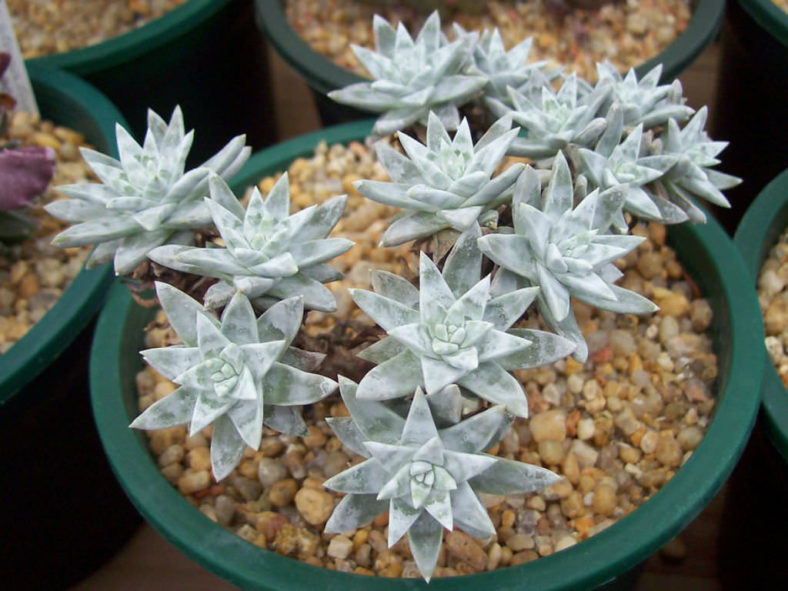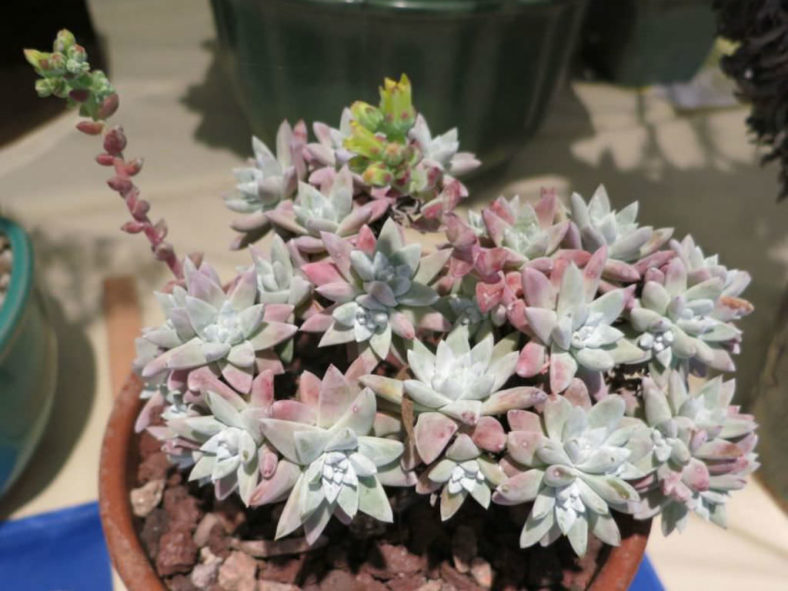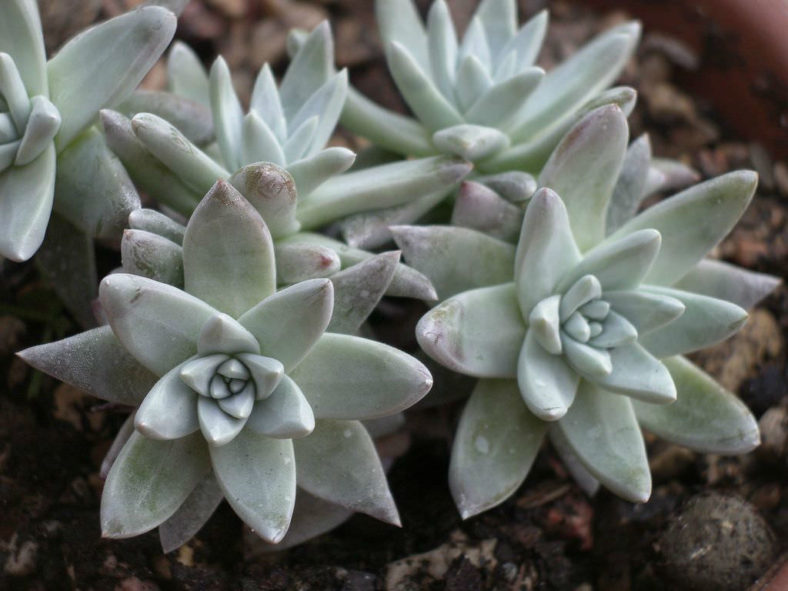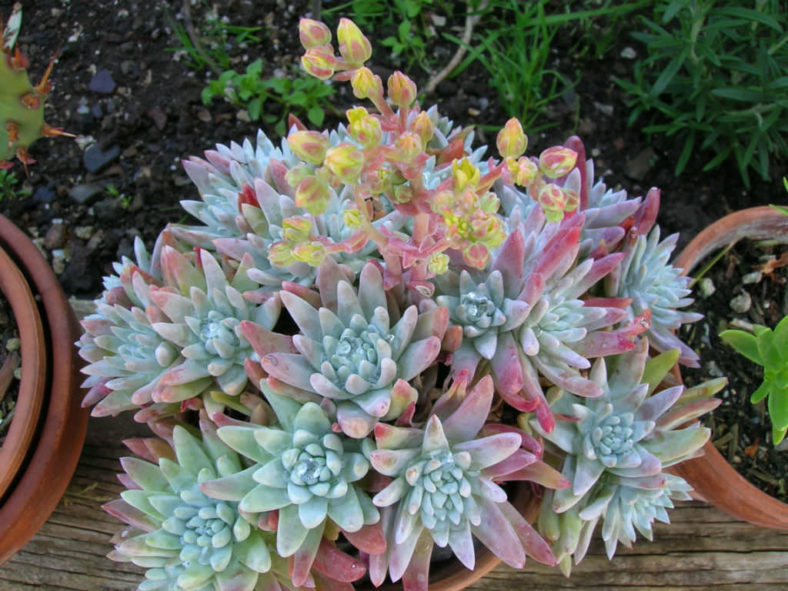Scientific Name
Dudleya gnoma S.McCabe
Common Name(s)
Munchkin Liveforever, Munchkin Dudleya, White Sprite
Synonym(s)
Dudleya 'White Sprite', Dudleya greenei 'White Sprite', Dudleya gnoma 'White Sprite', Dudleya greenei f. nana, Dudleya nana
Scientific Classification
Family: Crassulaceae
Subfamily: Sempervivoideae
Tribe: Sedeae
Genus: Dudleya
Origin
Dudleya gnoma is endemic to Santa Rosa Island, one of California's Channel Islands. It is known only from one population containing about 3,200 plants. Though rare in the wild, this Dudleya is kept in cultivation by succulent enthusiasts, known under the illegitimate names Dudleya 'White Sprite', Dudleya greenei 'White Sprite', Dudleya gnoma 'White Sprite', or Dudleya greenei f. nana.
Description
Dudleya gnoma is a rare compact succulent with a caudex topped with a clump of rosettes of up to 20 small leaves. The rosettes can reach up to 2 inches (5 cm) in diameter. The leaves are fleshy, triangular to triangular-ovate, measuring up to 1 inch (2.5 cm) long and 0.5 inches (1.3 cm) wide. They are green, red-tinged, or white with a waxy powdery coating of exudate.
In late spring, the rosettes produce an inflorescence studded with small triangular leaves, bearing up to 10 flowers. The inflorescence can grow up to 5.2 inches (13 cm) tall. The flowers are pale to bright yellow, sometimes orange, and can reach up to 0.4 inches (1 cm) in length.

Hardiness
USDA hardiness zones 9b to 11b: from 25 °F (−3.9 °C) to 50 °F (+10 °C).
How to Grow and Care
Most of the habitats Dudleyas occupy become dry in summer. Therefore, cutting off water to Dudleyas in your garden during the summer is important. Plants grown in sandy soils or containers are exceptions. They will accept infrequent summer watering as long as the soil drains well. The onset of fall or winter rains reawakens Dudleyas from drought-induced dormancy. Their shriveled leaves plump up quickly, growth resumes, and flowering occurs during the following spring or summer. These plants are amazingly resilient. If a portion of a colony sloughs off a cliff face or is uprooted by a burrowing animal, it can persist for months until soil contact is re-established. Species that naturally grow on ocean bluffs are also salt-spray tolerant.
Dudleyas have their share of disease and pest problems. However, if you can prevent Argentine Ants from introducing mealybugs or aphids to your Dudleyas, they will be healthier. Mealybugs nestle in the deep recesses of the leaves, and their feeding weakens the plants.
Learn more at How to Grow and Care for Dudleya.
Links
- Back to genus Dudleya
- Succupedia: Browse succulents by Scientific Name, Common Name, Genus, Family, USDA Hardiness Zone, Origin, or cacti by Genus
Photo Gallery
Click on a photo to see a larger version.


